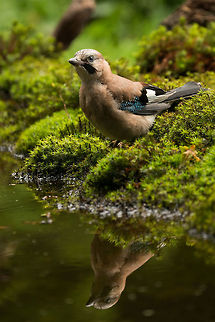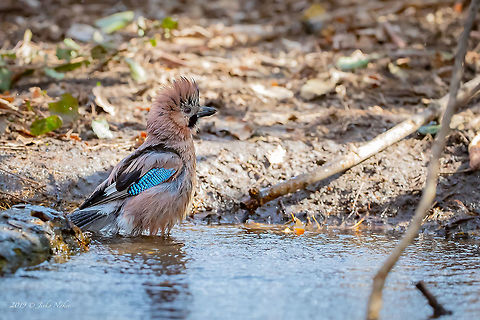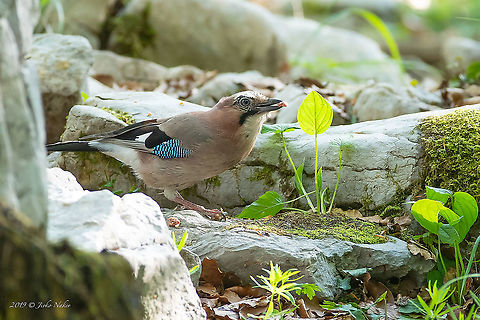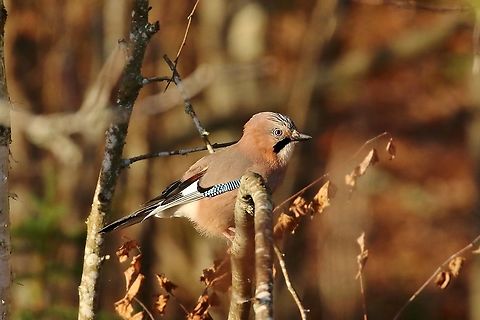
Distribution
A member of the widespread jay group, and about the size of the Jackdaw, it inhabits mixed woodland, particularly with oaks, and is an habitual acorn hoarder. In recent years, the bird has begun to migrate into urban areas, possibly as a result of continued erosion of its woodland habitat.
Behavior
Its usual call is the alarm call which is a harsh, rasping screech and is used upon sighting various predatory animals, but the Jay is well known for its mimicry, often sounding so like a different species that it is virtually impossible to distinguish its true identity unless the Jay is seen. It will even imitate the sound of the bird it is attacking, such as a Tawny Owl, which it does mercilessly if attacking during the day. However, the Jay is a potential prey item for owls at night and other birds of prey such as Goshawks and Peregrines during the day.
Habitat
A member of the widespread jay group, and about the size of the Jackdaw, it inhabits mixed woodland, particularly with oaks, and is an habitual acorn hoarder. In recent years, the bird has begun to migrate into urban areas, possibly as a result of continued erosion of its woodland habitat.
Reproduction
It nests in trees or large shrubs laying usually 4–6 eggs that hatch after 16–19 days and are fledged generally after 21–23 days. Both sexes typically feed the young.
Food
Feeding in both trees and on the ground, it takes a wide range of invertebrates including many pest insects, acorns , beech mast and other seeds, fruits such as blackberries and rowan berries, young birds and eggs and small rodents.References:
Some text fragments are auto parsed from Wikipedia.